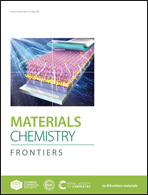The recent progress and perspectives on metal- and covalent-organic framework based solid-state electrolytes for lithium-ion batteries
Abstract
Lithium ion batteries (LIBs) have been widely used in new energy vehicles, large-scale energy storage, and intelligent electronic equipment due to their excellent electrochemical performance. Facing the increasing demands on good safety and high energy density, solid-state batteries as important candidates have become a hot spot in the research of LIBs. Developing high-performance solid-state electrolytes is the key to realizing the application of solid-state LIBs. Metal organic frameworks (MOFs) or covalent organic frameworks (COFs) are a kind of crystal material with regular channels and an ultra-high specific surface area, providing a promising structural platform for designing fast ionic conducting materials. Recently, researchers have designed and synthesized multiple types of MOF- and COF-based solid-state electrolytes (SSEs) with excellent performance. The recent progress, prospects and challenges of MOF-/COF-based SSEs will be systematically introduced, and some unique materials with specific characteristics or high conducting properties of other metal (sodium, zinc or magnesium) ions will also be highlighted in this review.

- This article is part of the themed collection: 2021 Materials Chemistry Frontiers Review-type Articles


 Please wait while we load your content...
Please wait while we load your content...